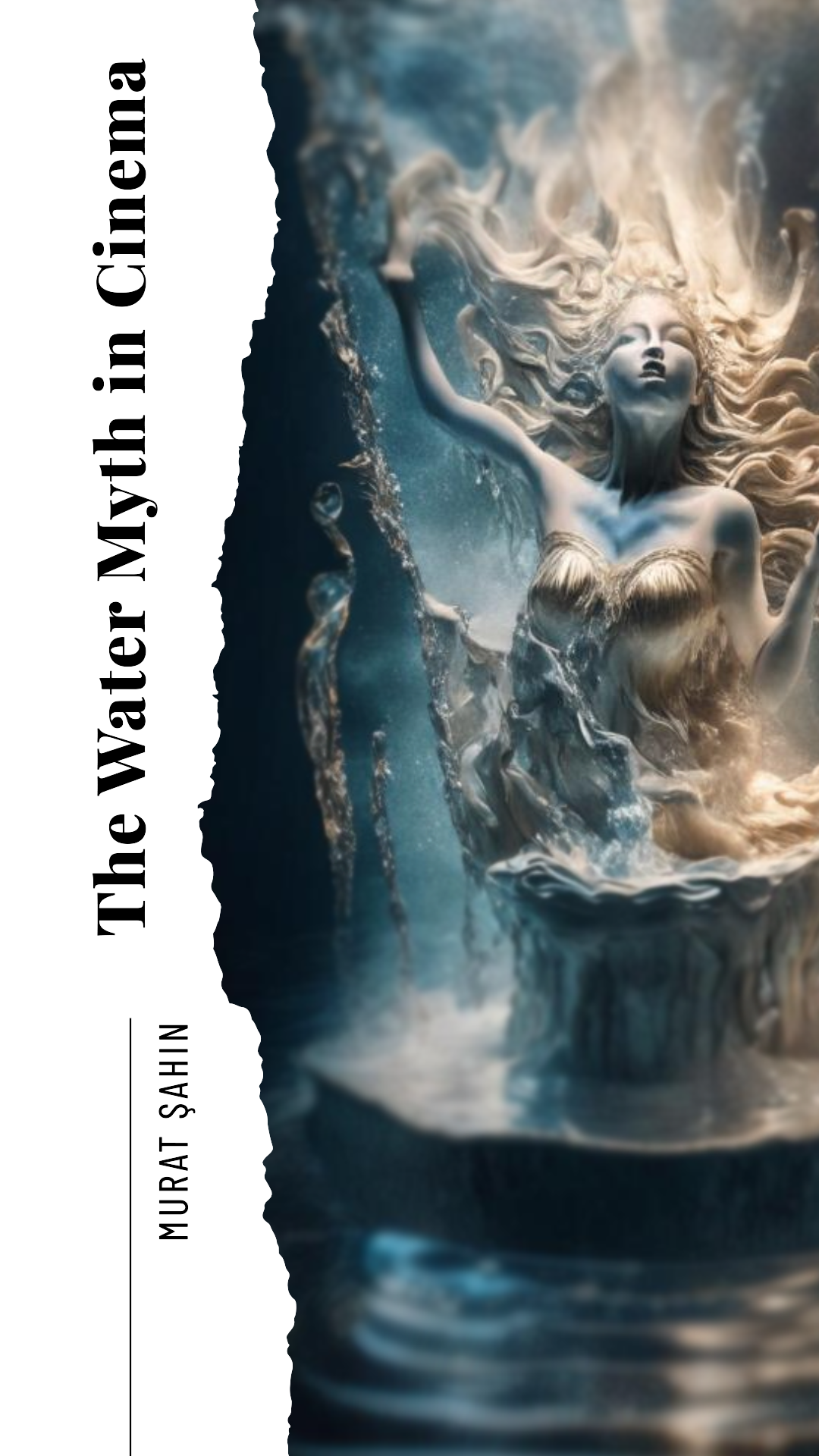Abstract
This study aims to explore the portrayal of the Fountain of Youth and the myth of the Flood in movies. Firstly, the meaning of the water myth is explained. Then, the focus shifts to how the myth of the Fountain of Youth and the Flood are depicted in different mythologies. The study utilizes qualitative method and thematic content analysis, selecting six films through purposive sampling. The analysis incorporates Joseph Campbell’s Monomyth theory and Klaus Koch’s work on the eight features of the apocalypse. The study reveals how these myths are reproduced through sub-themes identified within the main themes of the Fountain of Youth and the Flood. The results indicate that films present the myth of the Fountain of Youth in various forms. Heroes have different motivations for seeking the Fountain of Youth and encounter various obstacles. Characters who reach the Fountain of Youth undergo significant positive transformations. In flood narratives depicted in movies, the cause of the flood and the awareness of it differ from film to film. Furthermore, other movie findings illustrate who boarded the ship or vehicle to escape the flood and who faced punishment.
References
Aktulum, K. (2018). Sinema ve Metinlerarasılık: Filmlerarası Etkileşimler ve Aktarımlar [Cinema and Intertextuality: Interactions and Transfers between Films]. Çizgi Kitabevi. (In Turkish).
Aronofsky, D. (Director). (2006). The Fountain. Warner Bros.
Aronofsky, D. (Director). (2014). Noah. Columbia Pictures.
Baudou, J. (2005). Bilim-kurgu [Science fiction] (İ. Bülbüloğlu, Trans.). Dost Kitabevi. (In Turkish).
Bratton, F. G. (1995). Yakın Doğu Mitolojisi [Near Eastern Mythology] (N. Muallimoğlu, Trans.). MÜ İlahiyat Fakültesi Yayınları. (In Turkish).
Campbell, J. (2017). Kahramanın Sonsuz Yolculupu [The Hero with a Thousand Faces] (S. Gürses, Trans.). İthaki Yayınları.
Çığ, M. İ. (2009). Sümerlilerde Tufan Tufanda Türkler [Sumerian Flood Turks in the Flood]. Kaynak. (In Turkish).
Collins, M. A. (2017). An Ongoing Tradition: Aronofsky’s Noah as 21st-Century Rewritten Scripture. In Noah as Antihero (pp. 8–33). Routledge. https://doi.org/10.4324/9781315180892-2
Copier, L. (2017). Commercial Configurations of Scriptural Temporality: Noah as a Blockbuster. In Noah as Antihero (pp. 102–116). Routledge. https://doi.org/10.4324/9781315180892-7
Creswell, J. W., & Poth, C. N. (2016). Qualitative Inquiry and Research Design: Choosing Among Five Approaches. SAGE Publications.
Eliade, M. (2003). Dinler tarihine giriş [A History of Religious Ideas] (L. Arslan, Trans.). Kabalcı Kitabevi. (In Turkish).
Eliade, M. (2005). Dinler Tarihi: İnançlar ve İbadetlerin Morfolojisi [History of Religions: Morphology of Beliefs and Worship] (M. Ünal, Trans.). Serhat Kitabevi. (In Turkish).
Emmerich, R. (Director). (2009). 2012. Columbia Pictures.
Erhat, A. (1993). Mitoloji Sözlüğü [Dictionary of Mythology]. Remzi Kitabevi. (In Turkish).
Fereday, J., & Muir-Cochrane, E. (2006). Demonstrating Rigor Using Thematic Analysis: A Hybrid Approach of Inductive and Deductive Coding and Theme Development. International Journal of Qualitative Methods, 5(1), 80–92. https://doi.org/10.1177/160940690600500107
Geider, P. (Director). (2012). 40 Days and Nights. 20th Century Fox.
Genesis. (n.d.). Bible Gateway. https://www.biblegateway.com/passage/?search=Genesis%209-18&version=NIV
Hançerlioğlu, O. (2000). Dünya İnançları Sözlüğü [Dictionary of World Beliefs]. Remzi Kitabevi. (In Turkish).
Harman, Ö. F. (1989). Tufan [Deluge]. In TDV İslâm Ansiklopedisi [TDV Encyclopedia of Islam] (pp. 319‑322). (In Turkish).
Howard, R. (Director). (1985). Cocoon. 20th Century Fox.
Jackson, P. (Director). (2002). The Lord of the Rings: The Two Towers. Warner Bros.
Joo, H.-J. S. (2020). We are the world (but only at the end of the world): Race, disaster, and the Anthropocene. Environment and Planning D: Society and Space, 38(1), 72–90. https://doi.org/10.1177/0263775818774046
Jung, C. G., & Gürol, E. (2006). Analitik Psikoloji [Analytical Psychology]. Payel Yayınları. (In Turkish).
Kaya, K. (1997). Hint mitolojisi sözlüğü [Dictionary of Indian mythology]. İmge Kitabevi. (In Turkish).
Koch, K. (1972). The Rediscovery of Apocalyptic. SCM Press.
Kozlovic, A. K. (2016). Noah and the Flood: A cinematic deluge. In R. Burnette-Bletsch (Ed.), The Bible in Motion: A Handbook of the Bible and Its Reception in Film (pp. 35–50). De-Gruyter. https://doi.org/10.1515/9781614513261-007
Leder, M. (Director). (1998). Deep Impact. Paramount Pictures.
Leiserowitz, A. A. (2004). Day After Tomorrow: Study of Climate Change Risk Perception. Environment: Science and Policy for Sustainable Development, 46(9), 22–39. https://doi.org/10.1080/00139150409603663
Marshall, R. (Director). (2011). Pirates of the Caribbean: On Stranger Tides. Walt Disney.
Methmann, C., & Rothe, D. (2012). Politics for the day after tomorrow: The logic of apocalypse in global climate politics. Security Dialogue, 43(4), 323–344. https://doi.org/10.1177/0967010612450746
Neuman, W. L. (2012). Toplumsal Araştırma Yöntemleri Nitel ve Nicel Yaklaşımlar [Social Research Methods Qualitative and Quantitative Approaches] (S. Özge, Trans.). Yayınodası Yayıncılık. (In Turkish).
Qur’an. (n.d.). https://kuran.diyanet.gov.tr/mushaf
Reinhartz, A. (2018). Reversing the hermeneutical flow: Noah’s Flood in recent Hollywood films. In R. Walsh (Ed.), T&T Clark Companion to the Bible and Film (pp. 287–289). Bloomsbury Publishing. https://doi.org/10.5040/9780567666239.0031
Ruah-Midbar Shapiro, M., & Moore, L. (2019). “Not Your Grandmother’s Bible”—A Comparative Study of the Biblical Deluge Myth in Film. Religions, 10(10), 542. https://doi.org/10.3390/rel10100542
Von Burg, R. (2012). Decades Away or The Day After Tomorrow ?: Rhetoric, Film, and the Global Warming Debate. Critical Studies in Media Communication, 29(1), 7–26. https://doi.org/10.1080/15295036.2011.637221
Yin, R. K. (2009). Case Study Research: Design and Methods. SAGE.

This work is licensed under a Creative Commons Attribution 4.0 International License.

